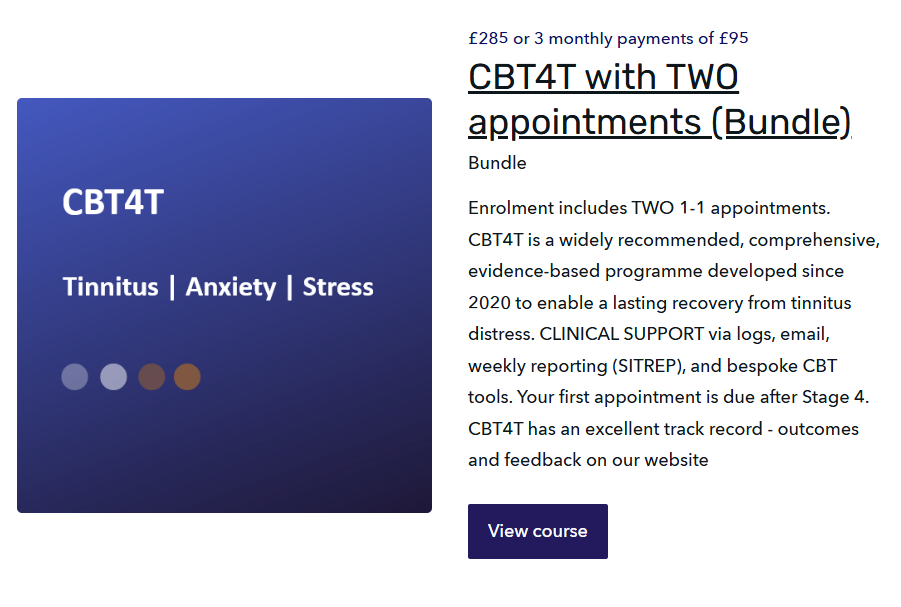The sections provided in The Basics is intended to be informative
The content in The Basics includes some tools used in the CBT4T programme, but not the framework, structure and clinical support of the CBT4T programme
Cognitive Behaviour Therapy enables people to change unhelpful actions and reactions that perpetuate distress.
Participating in CBT4Tinnitus enables pro-active building and maintenance of new routines of habit-behaviour and habit-thinking through interaction and participation in a well defined, structured, evidence-based, therapist-supported process carried out at each individual's own pace. However, using the sections in The Basics can be extremely beneficial when a TFI is up to mid-category 3 and requires no enrolment. The Basics content can only help you if you carry out your practices regularly and consistently.
Reacting behaviourally and emotionally to anything repetitively - including tinnitus - teaches your brain to keep reacting in the same way. That's great when a reaction is "so what" treating tinnitus as being of no consequence. But when we attach a negative significance to something, creating a negative narrative around consequences, the brain sets itself to monitor-mode and learns to do so very quickly. The guided process built in to the CBT4T programme, along with the one-to-one support you have throughout, enables that - and therefore you - to change.
Enrolment in CBT4Tinnitus with Debbie Featherstone provides direct clinical support through appointments and email, interactive logs, progress checks, weekly SITREPS and bespoke CBT tools. Options to spread the cost by monthly payments are available.
The 5 sections for self-directed use
- Breathing exercise - build a new routine of using the breathing exercise on waking and before sleep, mid-morning, midday, mid-afternoon and evening (6 times each day for 4-6 weeks
- Physiological relaxation - use 2-3 times each day alongside 2-3 of the breathing exerises
- After 4-6 weeks of using the breath work and relaxation, learn about Negative Thoughts
- Then learn about Cognitive distortions and identify those you use repeatedly
- The final component is to put what you have learned from the Negative Thoughts and Cognitive distortions sections in to practice through using Thought Records These will need to be used on a daily basis until you have retrained your thinking process through reframing negative thoughts

